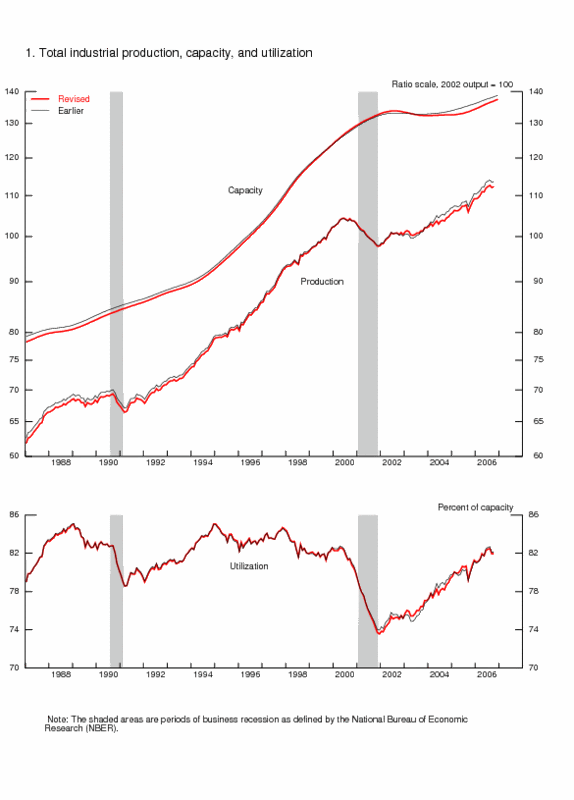The nation's economy grew at a 2.5% annual pace in the final three months of 2006, slightly faster than the previous estimate of 2.2%, the Commerce Department reported Thursday.
The upward revision to gross domestic product mainly reflected higher prices for trucks that boostedvehicle inventories. Investments in software were revised slightly lower. Exports were revised higher.
"The expansion is intact, but growth remains below potential," wrote Augustine Faucher, an economist for Moody's Economy.com.
Bloomberg adds:
The difference between the second and third estimates of growth was that inventories grew more than previously thought, suggesting production may be slow to pick up. Stockpiles subtracted 1.2 percentage points from growth, less than the 1.4 percentage points previously estimated.
Little Help
``More notable than the aggregate revision per se were the sources of revision,'' said Peter Kretzmer, a senior economist at Banc of America Securities LLC in New York. ``The slightly higher inventory accumulation in the final report does not add to economic momentum.''
From Reuters:
"The (GDP) headline number looks better, but the gut of the report is a little worse," said Robert Brusca, chief economist for Fact and Opinion Economics in New York. "Going forward, we still don't know, but you should be disturbed by the lack of capital spending."
Business investment spending fell at a 3.1 percent annual rate in the fourth quarter rather than the 2.4 percent decline the government estimated a month ago. That contrasted with a 10 percent third-quarter jump.
Spending on new-home building plummeted at a 19.8 percent rate -- steeper than the 19.1 percent fall estimated a month ago -- after an 18.7 percent drop in the third quart
It was the fifth quarter in a row that residential spending has fallen and the steepest since a 21.7 percent plunge in the first quarter of 1991 when the economy was on the brink of recession.
The drop in business investment should raise a lot of concerns. Corporations have a ton of cash on their balance sheets -- according to the Fed's Flow of Funds report they're the only economic sector that is saving right now. It's not as though they don't have enough money.
And it's not as though business couldn't use some more capacity. According to the Federal Reserve:
The capacity utilization rate for total industry was 82.3 percent in the third quarter of 2006, 1.3 percentage points above its 1972-2005 average and 0.2 percentage point lower than reported earlier. The utilization rate for total industry was revised up 1/4 percentage point in the fourth quarters of 2003 and 2005 and revised down 0.4 percentage point in the fourth quarter of 2004.
Here's a chart from the same Fed report. While capacity utilization isn't as high as it was in the 1990s, it's still over 80%.

So - business has the money to invest and could probably use a bit more capacity. Yet they're not increasing the rate of their investment.
That's not a good sign.